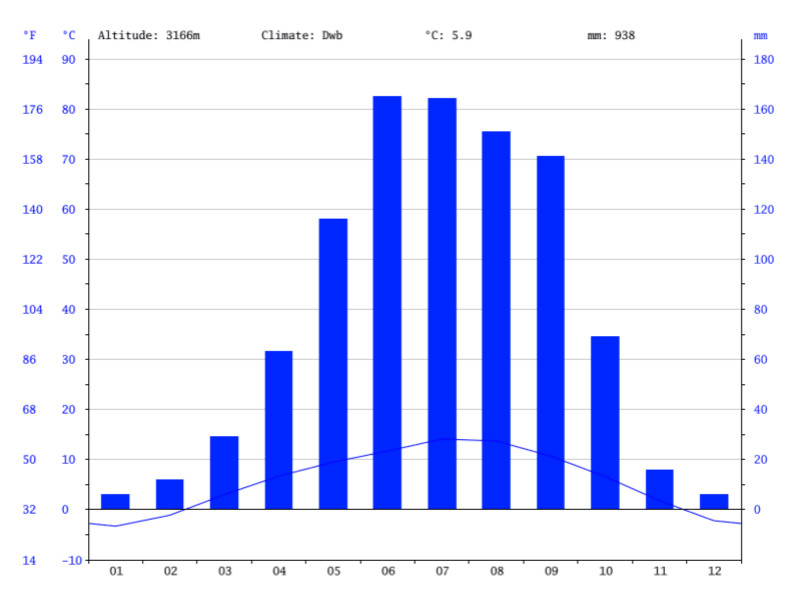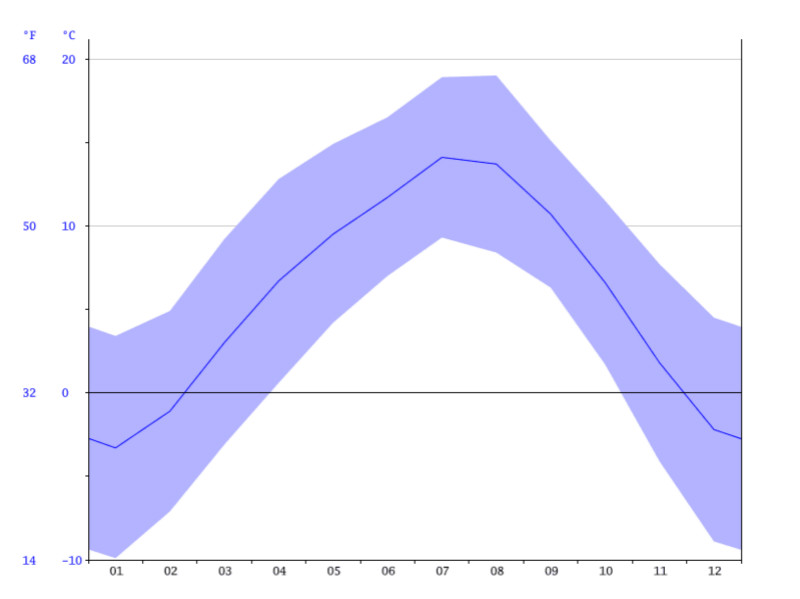
Mount Siguniang Climate
Mount Siguniang Weather and Climate describes information with temperature, precipitation, Geography, What Clothes to Wear in Mount Siguniang, weather and climate by month, climate graph, 15 days Mount Siguniang weather forecast. Find out the best time to visit Mount Siguniang and see the season highlights in Mount Siguniang. It also tells you what to wear in different seasons and Clothes packing for your Trip to Mount Siguniang.
Weather and Climate in Mount Siguniang
Mount Siguniang belongs to subtropical climate. Due to the wide difference of terrain elevation difference in the area, the mountain climate changes obviously with the change of altitude. From the Wori River Valley in the southwest corner of the protected area to the main peak, a complex climate vertical zone spectrum is formed, showing a climate zone spectrum with vertical distribution of temperate zone, cold temperate zone, sub-cold zone, cold zone and permafrost zone. The annual average temperature in the reserve is 5.9℃, and the average temperature at the top of Siguniang Mountain is -17.1℃. Frost-free period is 78 days. The dry rainy season is obvious in the area, with uneven distribution of precipitation seasons and regions, with annual rainfall of 931.5mm. There is plenty of sunshine, with the sunshine percentage as high as 51%, and the annual average sunshine hours of 2265 hours.
Siguniang Mountain enjoys a typical plateau climate. It is cool in the morning and evening, hot at noon, with blue sky and white clouds, bright stars at night and fresh air. However, due to the high sea level, some people will have different alpine reactions.
Siguniangshan Town(Rilong Town) Climate Graph
 Precipitation is the lowest in January, with an average of 6 mm. In June, the precipitation reaches its peak, with an average of 165 mm.
Precipitation is the lowest in January, with an average of 6 mm. In June, the precipitation reaches its peak, with an average of 165 mm.
Siguniang Town Average Temperature
 At an average temperature of 14.1 °C, July is the hottest month of the year. At -3.3 °C on average, January is the coldest month of the year.
At an average temperature of 14.1 °C, July is the hottest month of the year. At -3.3 °C on average, January is the coldest month of the year.
Siguniang Town Temperature by Month
 Between the driest and wettest months, the difference in precipitation is 159 mm. The variation in annual temperature is around 17.4 °C.
Between the driest and wettest months, the difference in precipitation is 159 mm. The variation in annual temperature is around 17.4 °C.
Four Seasons of Mount Siguniang and What to Wear
Spring(March-May)
The spring (March to May) temperature of Siguniang mountain is 7 ℃ on average, so it is recommended to wear down jacket, antiskid climbing shoes and underwear with good perspiration performance. Due to the dry climate and less rainfall, please also carry sunscreen, sun hat and sunglasses.
| Month | March | April | May |
| Average Temp. | 4 ℃ | 6.5℃ | 9.8℃ |
| Average Rainfall | 18mm | 60mm | 140.2mm |
Summer(June to August)
In summer, the temperature of Siguniang mountain has increased, and the rainfall has increased significantly, with an average temperature of about 12 ℃. Therefore, it is recommended to wear a kind of 3-in-1 Winter Jacket with good air permeability, waterproof and antiskid climbing shoes, and carry an umbrella or raincoat. In the evening, the temperature is relatively low, so it is recommended to carry a down jacket to keep warm. In addition, you should bring sunscreen, sun hat and sunglasses.
| Month | June | July | August |
| Average Temp. | 11℃ | 13℃ | 12.6℃ |
| Average Rainfall | 170mm | 160mm | 170mm |
Autumn(September to November)
In the autumn of Siguniang mountain, the temperature drops obviously, and the rainfall also decreses, the average temperature is about 6 ℃. Therefore, it is recommended that you wear down jacket and climbing shoes. If you need climbing, it is recommended to choose underwear with good perspiration performance and easy to dry. The temperature is low at night. If you need to go out, it is recommended to wear thick clothes to keep warm.
| Month | September | October | November |
| Average Temp. | 11.2℃ | 6.3℃ | 2℃ |
| Average Rainfall | 115.2mm | 80.2mm | 19.2mm |
Winter(December to February)
Winter is the season with the lowest temperature and precipitation in the whole year. The average climate of Siguniang mountain in winter is about - 2 ℃. If you travel during this period, it is recommended to wear down jacket, thick wool pants, socks with good perspiration performance (several pairs), hat and socks with plush. In addition, in order to prevent snow blindness, you must carry sunglasses.
| Month | December | January | February |
| Average Temp. | -1.8℃ | -2℃ | 1℃ |
| Average Rainfall | 8.5mm | 5mm | 8mm |
Best Time to Visit Mount Siguniang
July and August are the best seasons for visiting Siguniang Mountain. During this period of time, the mountain is full of flowers, the flowers are like brocade, and you can go down to the valley to feel the coolness of the snow mountain water.
In addition, from the middle of October to the middle of November, the autumn scenery of Siguniang Mountain is like intoxicating wine, which may allow you to take the most beautiful photos in your life.
See more about Best Time to Visit Mount Siguniang.
Avoid Public Holidays in China
Try to avoid the public holidays of China, such as May Day Holiday(May 1-3), National Day Holiday(October 1-7), Spring Festival Holiday(Usually early February), Qingming Festival(in early April), Dragon Boat Festival(in June). Spring festival and national day festival are the most crowded time to travel. During these holidays, there will be a large crowd in the tourist attractions and you can't really enjoy yourself. Flights and hotels can cost three times as much than usual, and it's hard to get tickets during the Spring Festival.
More about Chinese National Holidays.












